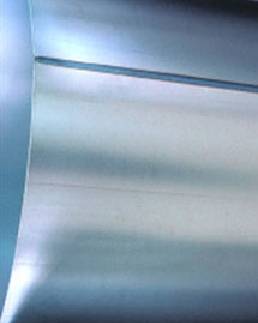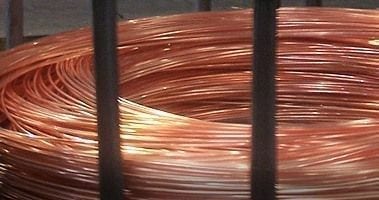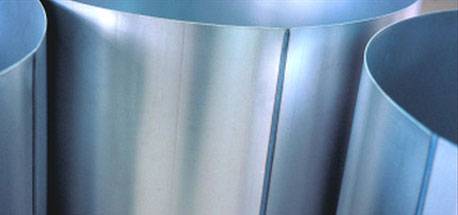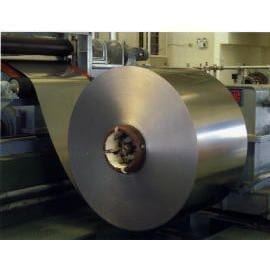Welding on Tinplate Cans
- Introduction
- Brief description of the importance of welding in the manufacture of cans.
- Mention of the types of cans (two or three pieces) and their relevance in the canning industry.
Welding is an essential process in the manufacture of cans, especially for three-piece cans, which are commonly used in the fish canning industry. These cans are created from a rectangular sheet of tinplate that is rolled into a cylinder and joined by a welded vertical seam. Two extremities are added to this cylindrical section: the bottom or base and the lid. The lid is placed after filling the contents in the cannery. The union of the lid and the base to the can body is done through a process known as double seam, which is crucial for the correct operation of the container, since a bad execution in this process can result in the loss of the hermetic seal of the container and the possible contamination of the packaged food after the treatment.
Electric welding, which was introduced in the 1960s, is a method that provides energy in the form of electric current to generate the heat necessary to melt the metal parts to be joined, without the need to provide alloy. This technological breakthrough was crucial for improving the production of three-piece cans, such as those used for beverages and canned food, and was quickly adopted in the industry due to its efficiency.
In summary, welding is a fundamental step in the manufacture of cans that ensures the integrity and tightness of the container, protecting the contents from external factors and preventing its deterioration. This is especially relevant in the canning industry, where the quality and safety of the packaging are paramount for the preservation of fish and other foods.
- History and Chronology
- Historical development of can welding, highlighting important milestones such as the introduction of the electric welding process in the 1960s.
Can welding has been a crucial component in the metal packaging industry, and its development has marked significant technological advances throughout history. One of the most important milestones in the evolution of can welding was the introduction of electric welding in the 1960s. At this time, two different non-alloy welding processes were developed, both aimed at joining the side edges of three-piece can bodies.
The electric welding process is based on the application of a certain amount of energy in a given time to the areas to be joined. This energy, supplied in the form of electric current, is transformed into heat capable of melting the metal parts to be welded. Continental Can pioneered the introduction of a technique known as “Conoweld”.
Another significant breakthrough occurred in 1975 with the wire mash welding system (WIMA). This technique involved the use of a drawn and flattened copper wire, increasing the contact surface in the weld zone and producing a more solid and proper joint with a lap of only 1 mm wide. Soudronic developed the use of this copper wire as an intermediate electrode between the can seam and the copper welding rollers, which solved the problem of electrode surface contamination and improved weld quality.
These advances enabled can makers to produce non-alloy side seam containers for use in the food industry and other demanding applications, marking a significant change in can manufacturing and improving the efficiency and quality of the seaming process.
Regarding the advantages of each technology:
Conoweld:
- Advantages: It allowed the production of cans with an alloy-free soldering process, which was suitable for the food industry and other demanding applications.
WIMA:
- Advantages: Profiled wire welding improves weld quality by avoiding electrode contamination and increasing the contact surface in the weld zone. In addition, copper wire scrap can be recycled, which provides an economic benefit.
These technologies represented significant advances in can manufacturing and improved the efficiency and quality of the welding process in the industry.
- Fundamentals of Electric Welding
- Physical principles governing electric welding.
- Description of the process of energy input and its transformation into heat to melt metals.
Electric resistance welding is a process used to join metals by fusion, and can be done with or without filler material. This type of welding is based on the generation of heat due to the resistance that the materials offer to the passage of a high intensity electric current.
The heat generated during welding is a function of the resistance of the materials and contacts (R), the intensity of the electric current (I) and the time during which the current flows (t), according to Joule’s law. The mathematical formula describing this relationship is W = R x I^2 x t, where W is the heat energy dissipated in Joules, I is the current intensity in Amperes, R is the resistance in Ohms and t is the time in seconds.
The basic configuration for resistance welding includes two electrodes that apply a force (F) on the metals to be welded. In the meantime, an electric current passes through the metals over a period of time, generating the heat necessary to melt the metals and, together with the pressure exerted, eventually join them together.
The melting temperature of tin, one of the components of tinplate, is 232°C, while that of base steel is 1200-1300°C. During soldering, tin melts rapidly and can deposit on the electrodes, increasing the contact resistance. To avoid this problem and maintain the efficiency of the process, a copper wire is used between the sheaves to transport the ferrule, evacuate the tin and dissipate part of the heat generated.
- Materials and Coatings
- Description of the materials used in the manufacture of cans, such as tinplate and chromium electroplated steel (TFS).
- Importance of passivation and tin coating weight.
Tinplate is a material traditionally used in the manufacture of metal containers, especially for foodstuffs. It consists of a steel base coated with a thin layer of tin. This tin coating is important because it provides corrosion resistance and is suitable for electrical soldering, which is essential for can manufacturing. The weight of the tin coating generally varies from 2.8 to 11.2 g/m2, with increments of 2.8 g/m2. For uncoated cans, the weight is usually 8.4 g/m2 or 11.2 g/m2. Tin also contributes to the electrochemical protection of any exposed areas of the steel base.
On the other hand, TFS, or tin-free steel, also known as chrome plate, emerged as an alternative to tinplate in response to the rising price of tin and concerns about the depletion of its sources. The TFS has a basic steel backing and is protected by a chrome and chrome oxide coating applied on both sides. This coating is achieved by electrochemical deposition from chromic acid solutions. Although the thickness of the coating layer is much smaller compared to tinplate, it offers high uniformity and the area of exposed iron metal in the pores is smaller than in tinplate.
Passivation is a crucial pretreatment applied to both tinplate and TFS to improve its corrosion resistance. This process involves the creation of a protective layer that decreases the reactivity of the metal and, therefore, its tendency to corrode. In the case of tinplate, passivation is achieved with a passivation film, while in TFS a mixed coating composed of chromium and chromium oxide is used.
Varnishing is another process that can be applied to these materials to further reduce the risk of corrosion. However, the use of varnished coatings is not always feasible or cost-effective, and their application depends on the product that the can will contain and the storage conditions to which it will be subjected.
- Equipment and Machinery
- Initial adjustments and maintenance of equipment to ensure welding quality.
In the welding process, proper adjustment and maintenance of the equipment is essential to ensure welding quality. This includes:
- Adjust welding current and welding force to achieve proper melting of the metal without causing burns or piercing.
- Keep all parts of the welding station clean, as the accumulation of dirt or debris can affect the quality of the process. This includes cleaning of electrostatic powder, cleaning of the varnish dispenser and cleaning of the welding rollers.
- Verify and adjust weld geometry, such as overlap, and grind the profile of the welding rollers to ensure a consistent and strong joint.
- Ensure effective line clearance on production order changes or shift changes.
- Problems and Solutions in Welding
- Discussion of common welding problems.
- Strategies to prevent and solve these problems.
In resistance welding, which is a commonly used method in the metallographic industry, several problems can occur that affect the quality of the weld. Some of the main welding defects and their possible causes are discussed below:
- Cold weld: This defect occurs when insufficient heat is reached to properly melt the materials, resulting in a weak joint. Causes may include insufficient current, inadequate electrode force or too short a welding time.
- Hot welding: Occurs when the heat generated is excessive, which can cause deformation or holes in materials. This may be the result of too high a current, prolonged welding time or incorrect electrode pressure.
- Irregular extrusion: This refers to inconsistency in the shape of the weld, which can be caused by poor geometry of the welding rollers or uneven pressure during the process.
- Tapered overlap: A defect that manifests itself as an uneven overlap of the sheet edges, which may be caused by incorrect machine adjustment or improper feeding of the bodies into the sheaves.
- Buckled end: Refers to a deformation at the end of the weld, which may be the result of an improperly adjusted calibration crown.
- Short circuit with wire: This problem occurs when there is unwanted contact between the wire and some part of the machinery, which can cause an interruption in the welding process.
- Weld Contamination: The presence of dirt or foreign particles in the weld zone can result in a poor quality joint.
- Fishtail and twin ferrules: These are specific defects that may be related to the position and speed of the outfeed conveyor or to incorrect settings in the welding process.
- Cold spot weld bead: Indicates areas where welding has not been performed properly, possibly due to insufficient current or excessive contact resistance.
- Weld oxidation: Can be caused by excessive exposure to air during the welding process, resulting in the formation of oxide in the welded joint.
- Welding Protection
- Methods to protect the weld, both internally and externally, against attacks from the contained product and the environment.
- Transition from the application of liquid varnish to more modern and less polluting techniques.
To protect the welding of metal containers, both internally and externally, against attacks from the contained product and the environment, a technique was initially developed based on the application of a liquid varnish immediately after welding. This varnish was applied by means of an impregnated felt roller or by atomization using a small spray gun, and then cured in a linear oven. However, this technique required diluting the varnish with a solvent to obtain the right viscosity and required auxiliary equipment to reduce environmental contamination, which was not always achieved efficiently.
Over time, this technique was replaced by more modern and less polluting methods. One of the advances in this area has been the use of electrostatic powder, which offers a more controlled application and reduces environmental contamination. Electrostatic powder is adhered to the weld by a process involving electrical charging of the powder, which improves application efficiency and minimizes material waste. In addition, it is recommended to cool the weld before and after coating to improve the adhesion and increase the flexibility of the coating, respectively, which is necessary for the flanging and cordoning operations.
For external protection of the weld, varnishes are applied to protect against humidity and the environment, and control tests are carried out to ensure the quality of the application, such as water absorption tests.












0 Comments